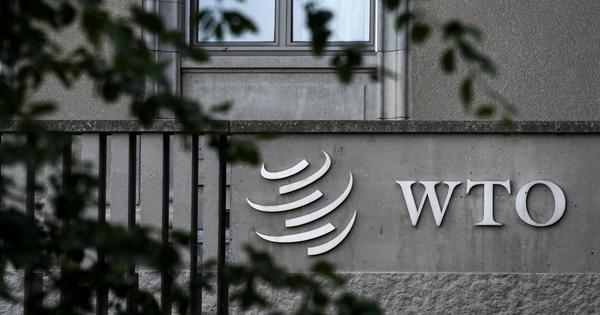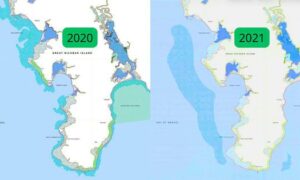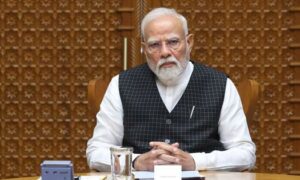
On April 13, 1994, while speaking at a ministerial meeting at Marrakesh before the signing of the World Trade Organization Agreement, Pranab Mukherjee representing India, as its commerce minister concluded by saying that India “negotiated in good faith” and that while it “preferred” that the results were different, it was looking forward to “the promise of the integration of the textiles and clothing sector into the General Agreement”.
The “price” paid by India to get broader access to the textile markets of the West was the signing of the Agreement on Trade Related Intellectual Property Rights – TRIPS. Back in the 1990s, the idea of linking trade in intellectual property, or IP, to trade in goods was alien to international commerce.
For example, the Berne Convention on the Protection of Literary and Artistic Works, which dates back to 1886, only applied to the protection of copyrights for member states. It was never tethered to the trade in international goods between the member states. The WTO Agreement changed this equation by linking the trade in goods to the protection of intellectual property.
Starting with the Ronald Reagen administration, in the mid-80s, successive American administrations across political lines decided to pursue a strategy of linking trade in goods to IP since the latter accounted for an increasingly large percentage of American exports. A key target at the time were countries like India which did not recognise patents for a large number of products at the times, including pharmaceuticals, chemicals, metals etc. The Americans decided to use their economic might to force countries like India to amend their national laws to recognise American IP.
The “carrot” and “stick” approach of the American government, involved the promise of greater access to the American textile market, along with the threat of trade sanctions and withdrawal of trading privileges like the “Generalised System of Preferences”.
This sabre-rattling by the American administration back then drew widespread condemnation from many American economists who described it as the “economic equivalent of civilian bombing”.
Economist Jagdish Bhagwati petitioned George Bush Senior, then the US president, warning him that the economic threats being made against countries like India would revive the “image of the ugly American” in foreign countries. Nevertheless, India in 1994 eventually signed the TRIPs Agreement as part of the WTO Agreement and eventually amended its domestic intellectual protection laws so as to comply with TRIPs. The benefits of greater textiles exports to the western world, it was hoped, would outweigh the costs of reintroducing a patent law to protect foreign inventions in the country.
A lot has changed since Mukherjee’s speech at Marrakesh in 1994. Many of the “carrots” from 1994 have been withdrawn. In 2019, under the first Trump administration, the Generalised System of Preferences benefits offered to India were withdrawn on the grounds that India was not allowing American companies equal access to its dairy market.
Many sectors were already hurting due to this withdrawal, since many of India’s competitors in the developing countries continued to benefit for the Generalised System of Preferences privileges. The more recent decision by the Trump administration to impose an astounding 50% tariff on Indian exports, including on textiles and apparel threatens millions of jobs especially in the small and medium sector.
Further, Trump’s tariffs are also going to chill plans for future investment in Indian manufacturing by foreign investors. While the Generalised System of Preferences were a trading privilege that the Americans were not compelled to offer India, the targeted and discriminatory tariffs imposed on Indian exports to the United States, goes to the heart of the WTO Agreement, which requires parity of treatment amongst trading partners.
If the Americans are going to destroy the WTO consensus, any new trade negotiations should begin with reminding the Americans that the protection of their IP in India is a privilege extended by India in exchange for access to the American market. TRIPs was political dynamite for the Indian government back in the 90s. Some, like the Rashtriya Swayamsevak Sangh-affiliated Swadeshi Jagran Manch have already recommended, in April, that India walk out of TRIPs, way before the 50% tariffs were announced by the Trump administration.
The problem with that recommendation is that it risks drawing the ire of the European Union, United Kingdom, Japan and possibly South Korea, all of whom count on India protecting and enforcing their IP rights. India cannot afford creating more enemies while embroiled in a trade war with the United States. The free trade deal currently being negotiated with the European Union will most certainly fall apart if India were to walk out of the TRIPs Agreement.
An alternative strategy for India is to target the IP of specific American companies, with the aim of creating domestic pressure on the Trump administration. The first and obvious target should be pharmaceutical patents held by the largest American pharmaceutical and biotech companies that make up the membership of influential industry lobbies like PhRMA and BIO.
The Indian government could threaten to invoke its powers under Section 66 (can be invoked in public interest) or Section 157A (a national security provision which can be invoked in the case of international emergencies) of the Patents Act, 1970 to revoke pharmaceutical patents granted to influential American companies.
A second target could be American technology companies like Qualcomm which holds thousands of patents in the telecom space and uses them to extort royalties from smartphone manufacturers investing in India as part of the “Make in India” mission.
A third option is to block all American entities from patenting in India, by issuing a notification under Section 134 of the Patent Act to block citizens of the United States from seeking patents in India.
A fourth, informal, option is to whisper into the Patent Office’s ears that they must reject all patent applications filed by American companies and also allow for all oppositions filed against patent applications of American companies.
These threats to American patents should be accompanied with threats to the American creative industries which rely on copyright protection in India to earn their revenues. These include American companies marketing software (like Microsoft), movies, music, books and periodicals in India. A notification deleting the United States from the International Copyright Order, 1999, would put an end to copyright protection for American companies seeking to enforce their copyrights in India.
There is little for India to lose at this point by making these threats to American IP, since most Indian exporters were priced out of the American market, the moment Trump imposed 50% tariffs on Indian exports. What remains are India’s generic drug exports, which are currently exempted from tariffs, but it is well known that the Americans have few alternatives to Indian drugs.
In fact, reporting in the American media outlets like Pro Publica indicates that the Americans are so dependent on Indian generics drugs that they have continued to import drugs from even those facilities which were found to be in violation of good manufacturing practices by the USFDA because the Americans cannot find alternatives, in the short term, to Indian drugs in several therapeutic categories.
The only other industry exempted from American tariffs are electronics manufactured in India but it is only a matter of time before manufacturing, for the American market, shifts back to the United States. Trump has made it clear that this is one of his goals. The writing is clear on the wall.
For Indian trade negotiators, who are facing the impossible demands of the American to open up access to Indian agricultural and dairy market, the threat of rewriting Indian law on continued protection of American IP, offers some leverage, to push back and create domestic pressure on Washington by American companies who have profited handsomely in India due to the TRIPs Agreement.
Even if this gambit fails, India still benefits from saving domestic business from the expense of licensing American IP, be it patents or copyright in music or software, which in turn will result in fewer IP royalties exiting the country.
The writer is the author of Create, Copy, Disrupt: India’s Intellectual Property Dilemmas, (Oxford University Press, 2017).
📰 Crime Today News is proudly sponsored by DRYFRUIT & CO – A Brand by eFabby Global LLC
Design & Developed by Yes Mom Hosting






